Some months ago I discovered Leuchtturm 1917 notebooks on the recommendation of my colleague Bill Palmer. I wrote about the new experience at the time and, since then, I have been using their notebooks in a variety of sizes.
Notebooks have always been close to my heart and for the past few years my notebook of choice was the Moleskine. However, since I took a greater interest in recovering my declining writing skills and the use of fountain pens (brought on by constant keyboard use), I found problems with Moleskine allowing ink-through to the back of the paper.
Obviously the amount of ink leaching to the back of the page depends on the pen and the ink flow. Immediately, on buying my first Leuchtturm 1917 notebook, I noticed a significant improvement. The paper appears to be slightly thicker than that in the typical Moleskine book; but the main reason, I suspect, is the surface finish. Leuchtturm books have a finer texture and a smoother coating and this somehow helps prevent osmosis. Leuchtturm — it is German for Lighthouse — calls this “inkproof paper” and I am not about to argue.
Osmosis
Leuchtturm pages are by no means immune to ink osmosis, however. One or two of my fountain pens do have a very heavy ink flow — in most cases good flow improves the writing experience — and, generally, the broader the nib the more the ink laydown. But it can have drawbacks in a notebook.
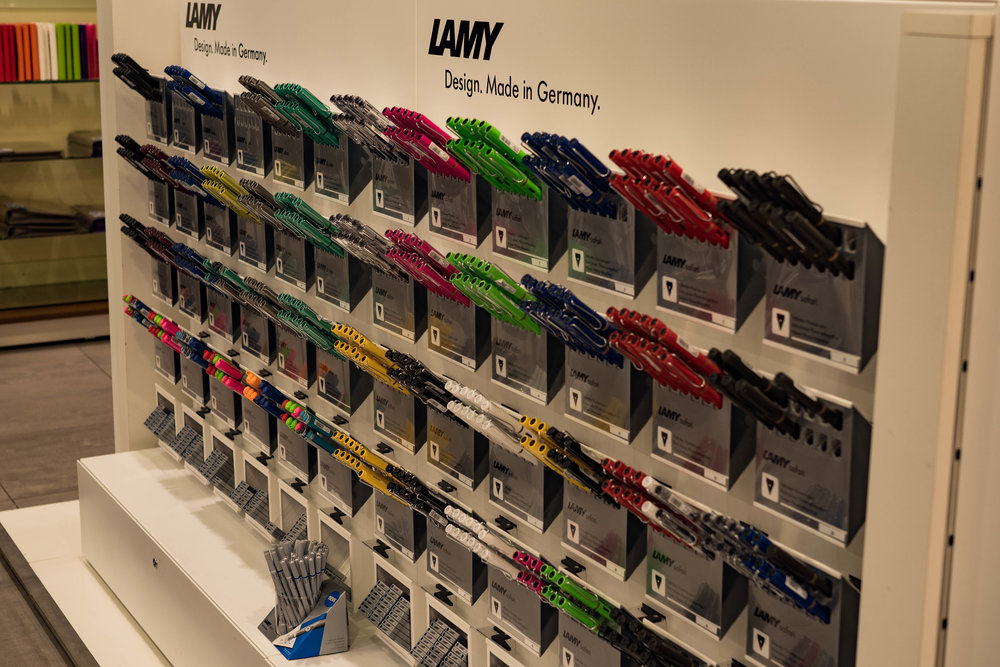
Overall, though, my experience of Leuchtturm is very positive. None of my inexpensive Lamy pens, nor the new Kaweco cheapo; the Pelikan Souverän, the Parker Duofold medium italic, none exhibit ink leaching.
While this impermeability is an important part of writing comfort, there is an even greater benefit in the No.31033721 121-page A5 notebook I have been using. The pages sit flat and provide a perfectly stable and level writing experience. This is possibly because the leaves are bound in small sheaves of 24 pages, thus permitting the double-page spread to sit flat. The smaller No.311346 A6 pocket notebook, which contains 60 pages, is bound in one bundle which means that, in common with most notebooks, it does not sit flat and the pages have to be held down as you write. These are both soft-cover books which I tend to prefer to the heavier hard-cover versions.
Most writers have a preference for left- or right-hand pages, although this tendency is usually subconscious. I have always preferred the right-hand page and, in the past, have often left the other side blank (especially if there is ink-though from the front). Because the No.31033721 sits so flat I find my objection to the left-hand page largely assuaged. I am perfectly happy writing on both left and right.
On balance, then, I prefer the 120-page book with its semi-stiff cover, silk bookmark ribbon and elastic securing band. This is undoubtedly the best notebook I have ever used. As with all Leuchtturm books it provides page numbers and a printed date box at the top of each page. It is a joy to write on.
Labels
This A5 book, which is 10mm thick, comes with a set of labels for indexing, including spine labels for archive purposes and a pocket inside the back cover for holding receipts or other small papers. At the front there are three pages devoted to a do-it-yourself contents list which, in conjunction with the numbered pages, is capable of creating a complete system. Most Leuchtturm notebooks come in blank, dotted, chequered or lined versions so you can choose the style that best suits you.
Since I am back in Berlin at the moment I have taken the opportunity to spend some time in the fifth-floor stationery department at the outstanding KaDeWe department store (Kaufhaus des Westens — Department Store in the West) on the Wittenbergplatz, just across the square from our office. This is one of the finest departments of its kind you could wish to find, with endless displays of every type of writing instrument and notebook. It contrasts starkly with the disappointing pen department at London’s Selfridges. This used to be one of my favourite stops. But it has now shrivelled to a mere shadow of its former self. KaDeWe shows how it should be done and, along the way, demonstrates faith in the continuing demand for writing implements and stationery.
Pens and things
I spent some time trying to find a nicer looking (that is, more expensive) Lamy fountain pen but concluded that the cheapest £15 Safari is king of its game. It writes perfectly, no matter what nib you choose, and the italic nibs are sublime. The chunky grip is just what I like and I am sure I wouldn’t warm to the slimmer profile of the more expensive pens, many with gold nibs replacing the simple but effective “school” steel nibs of the Safari range.
Click on images to enlarge


The rather obscure German manufacturer Kaweco is also a firm favourite of mine and, in some respects, bests Lamy in writing excellence no matter what nib is chosen. The Kaweco Sport Classic is a compact little pen with a long protective cap which, when reversed, turns the short pen into a full-size writing instrument. The small overall size is ideal for travel. And, guess what, Kaweco also has a little home at KaDeWe.
I couldn’t resist a rather beautiful traditional fountain pen, the Kaweco Dia. At €77.50 it looks as though it costs twice or three times as much and, as expected (I didn’t even bother to test it in the store) writes like a dream. Really good value. And to top it off I grabbed a Kaweco Sport calligraphy set with no fewer than four nib units in various widths of italic. That set me back only €50 which is another bargain.
Taken together, a cheap Lamy Safari or Kaweco and a Leuchtturm notebook is as near perfection and you can get.
_______________
- Subscribe to Macfilos for free updates on articles as they are published. Read more here
- Want to make a comment on this article but having problems? Please read this

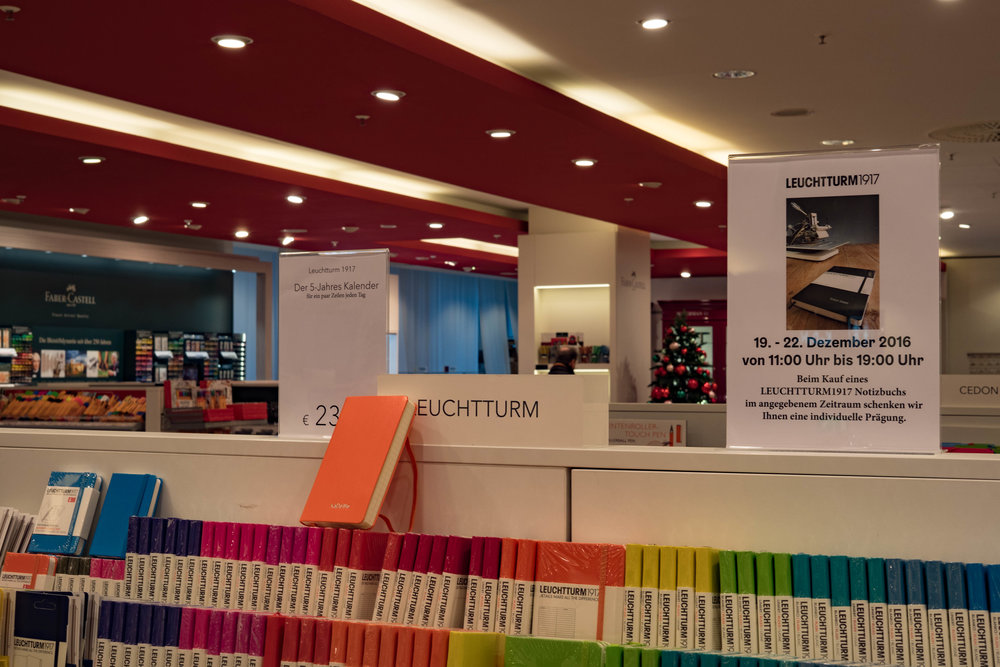
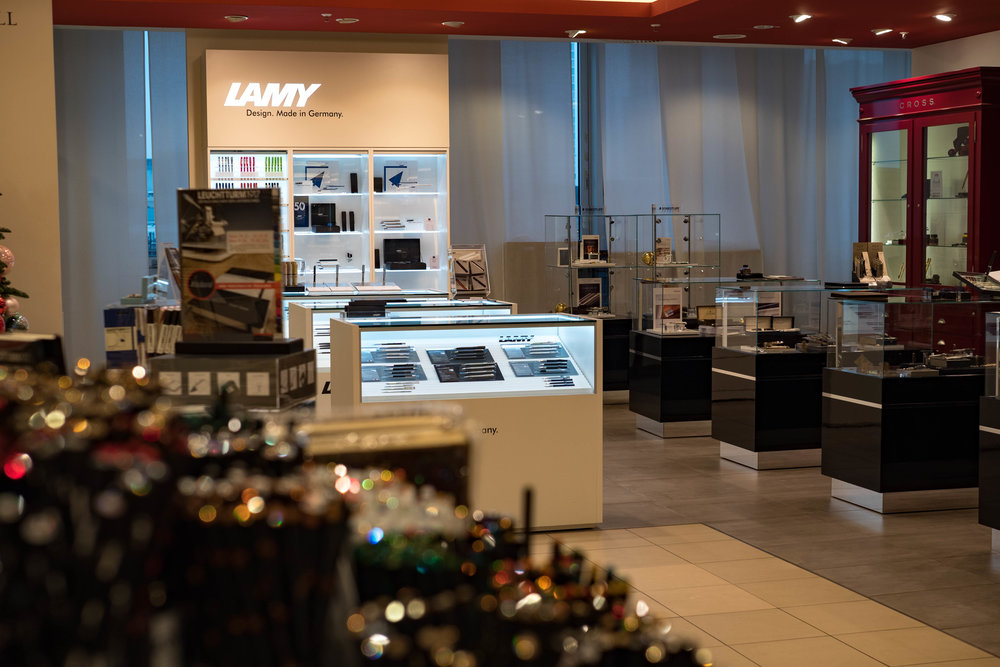
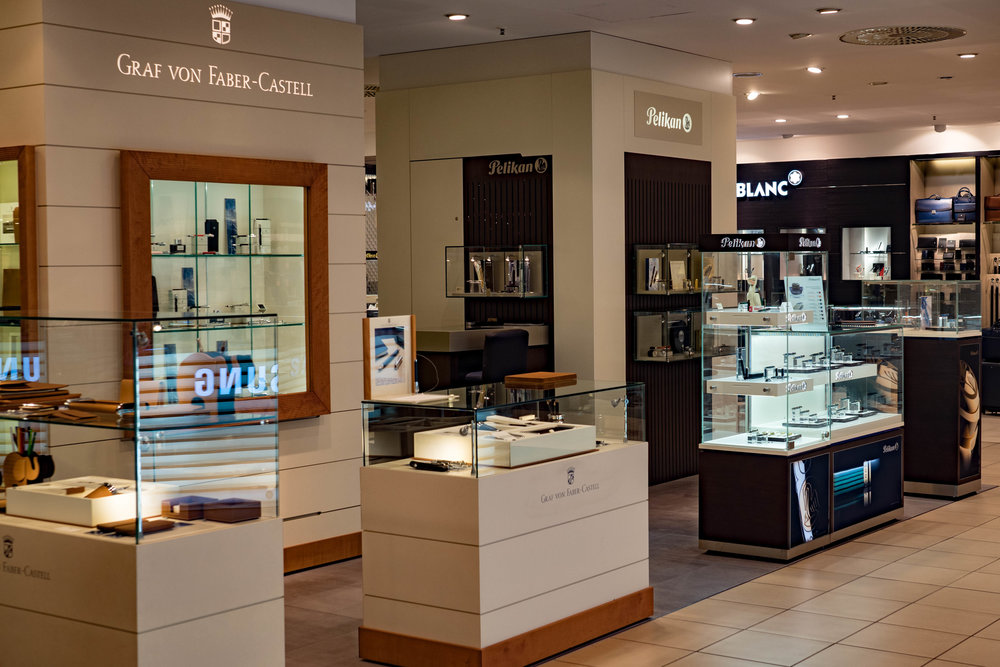
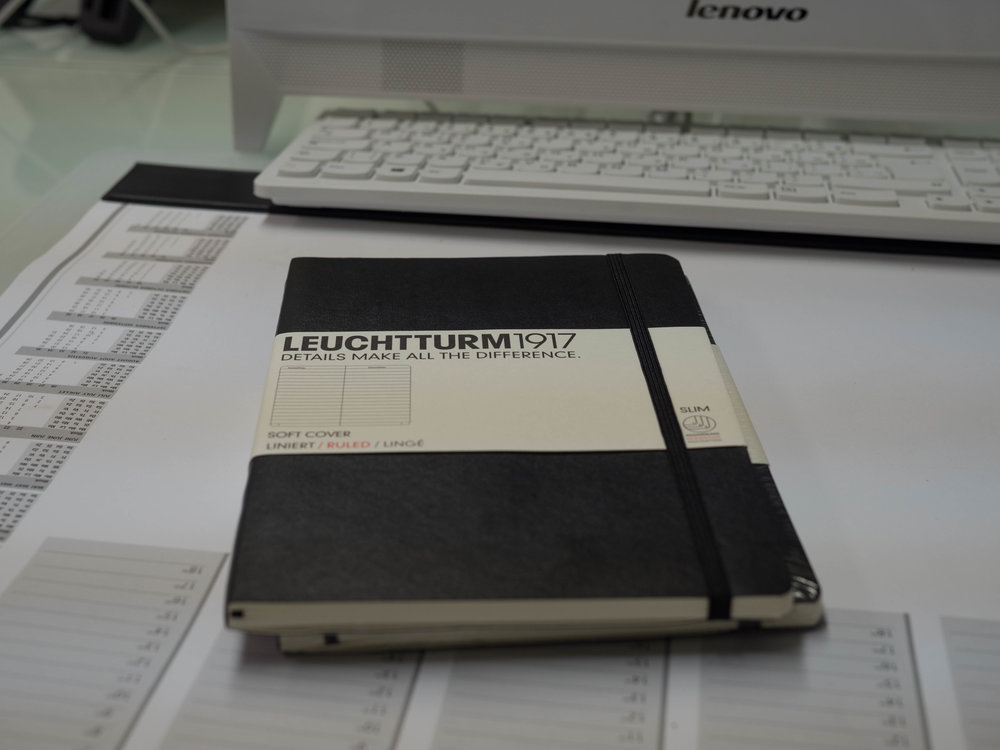
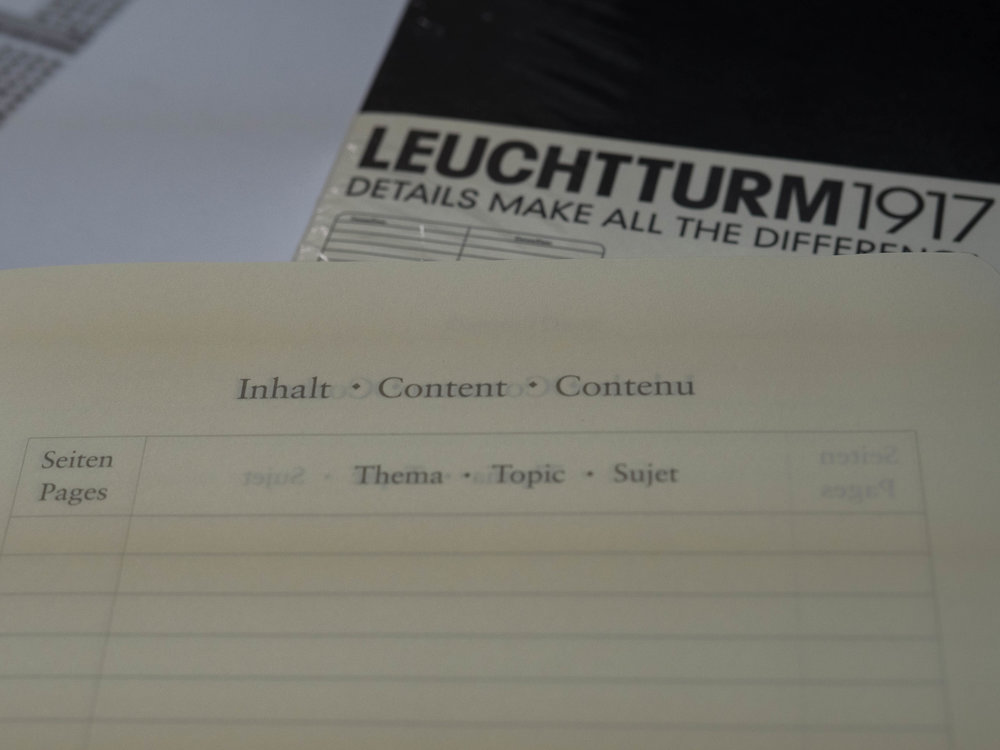
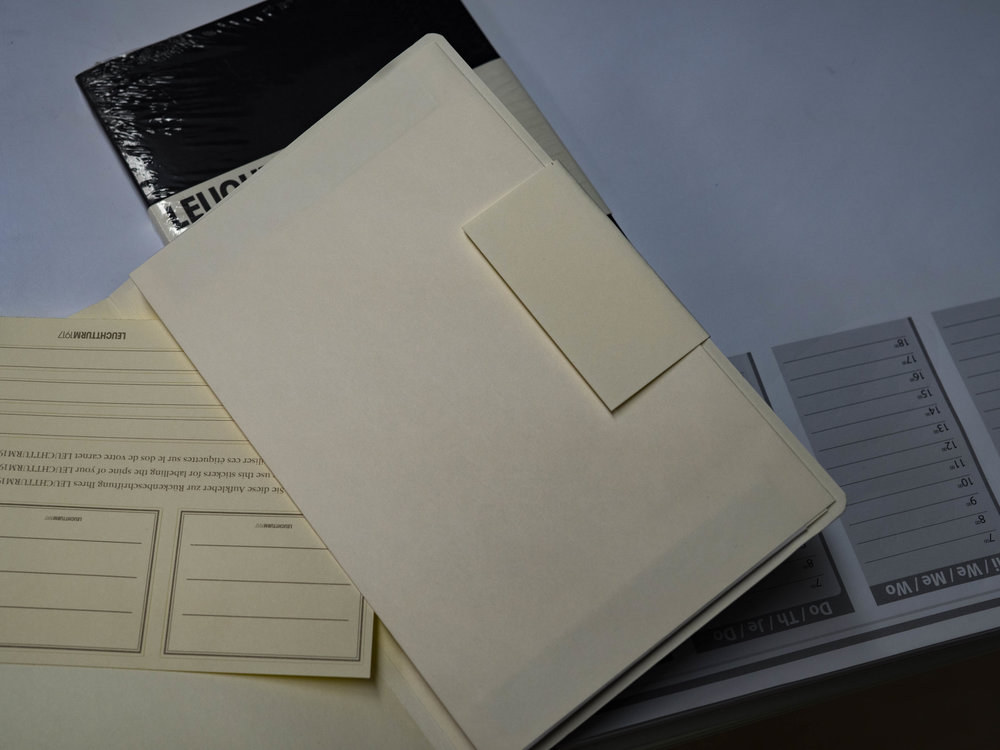
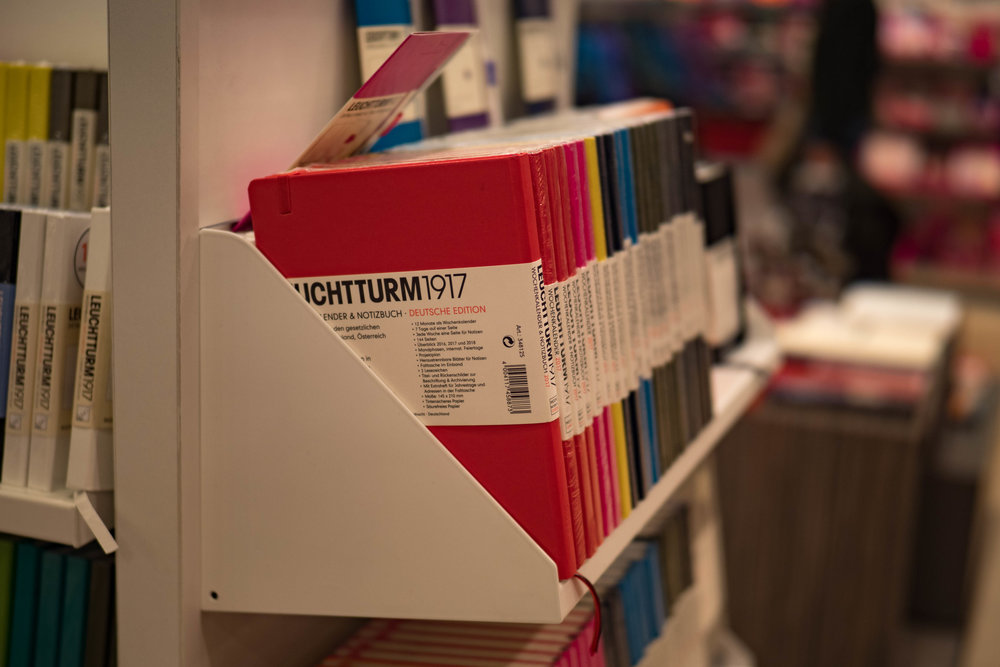
Mike,
Your posts have gotten me into fountain pen writing once again. This time, pens write so much better for a given amount of money and entry price is lower than it used to be. Much lower.
I suspect new fabrication makes modern pens better performers than older ones were. These days there is also more information on nib tuning and you can make a steel nib be as smooth and write as saturated as a gold nib does. Don’t assume steel nibs are second class citizens.
Fussing with pens is not as necessary and more time can go into actual writing. Analog writing leaves more time for contemplation than pounding keys does. I find my hand written notes are better thought out than keyboard ones. A number of people remark the same thing. I enjoy it.
As for paper, 32 pound laser printer paper has the same fountain pen writing performance as good Rhodia pads. I print very light ruling on this paper and use it for journaling, punching the paper and storing it in disk binders when done.
Thanks for this additional information, Tom. It all helps.
Well, I paid a king’s ransom for my Parker 51, vacumatic, double jeweled, sterling capped fountain pen; and, come hell or high water, I am going to use it…….More reasonably priced, high quality fountain pens be damned. 🙂
P.S. I am constantly surprised by the level of joy something as simple a writing with a fountain pen has brought me. You have provided a service.
That’s the spirit!
But I agree, writing with a good nib is a joy and no ballpen or other substitute can compare. It is a great pity that, eventually, the electronic word will take over the world.
I, too, have been corrupted by your writings on fountain pen and notebook. I am still using Moleskine, as the form and size are perfect….I do not even feel it in my pocket. I have discovered that some inks do soak through; but I have also discovered that Quink- in use with Parker medium and fine nibs- does not soak through the Moleskine paper. With Pelikan, the paper seemed to behave as though it were nothing more than a wafer thin sponge.
Oh dear, I’m beginning to get a complex and must weigh my responsibilities more carefully. I agree that ink flow differs enormously from pen to pen and from nib to nib. Ink also plays a part, as you imply. I am pleasantly surprised by the little Kaweco italic set I bought this morning. I haven’t tried the wider nibs yet but the 1.1mm standard nib unit is very similar to the medium italic I have from Lamy. The ink flow is more copious (but without causing osmosis on Leuchtturm) and I could swear the nib is smoother than the Lamy nib.
My big surprise with both Lamy and Kaweco is how smooth they write and how well-sorted is the ink flow. At the price, and bearing in mind these are cheap steel jobbies, the experience is quite remarkable. I have Parker Duofold, Pelikan Souverän and Montblanc pens ranging in price from £200 to £400 and none writes as well as the little Kaweco Sport. It’s like buying a plastic kit lens and discovering it can outperform a Leica Summilux.
I imagine the vast majority of people these days have never used a fountain pen. It is a pity; they don’t know what they are missing.
On the continent, kids still learn two write using a fountain pen. There are good reasons for this and I will have my kids use fountain pens as well. However, the general notion is for schools not to insist on fountain pens anymore as an increasingly number of parents consider this to be something of the past.
Kaweco are known to be dry fountain pens. This is a rather interesting brand that’s actually been around for centuries – mostly unnoticed by me. I also agree on Lamy. Given the price point of a Safari pen, it’s an excellent writer. It’s a straightforward design and most Lamys actually use the very same nib all the up to the pricier ones.
I a have a thing for Montblanc and I will agree that Montblanc nowadays has turned into a brand company rather than a pen company. However, their fountain pens (especially the nibs) are still top of the class, their reputation is excellent. I consider the Meisterstück 146 (LeGrand) to be the sweet spot in terms of size, form factor and weight. If you don’t like their current offering, you can some vintage models from the 50s or 60s for around 200,- Properly restored, they will last our life’s time for sure.
I also quite fancy the Japanese brands Pilot, Sailor and Platinum. For obvious reasons (hint: look at Asian characters), their forte is producing excellent nibs at fine size: EF, F. Japanese F corresponds to European EF nibs. They typically aren’t super smooth like Pelikans, but they are not scratchy. Instead they give a certain level of feedback that my handwriting seems to like.
One particular brand (from Taiwan) to pay attention to is: TWSBI. They used produce parts for other brands (for over 40 years), but have started producing their own pens around 2000 something. They had a rocky start, but have managed to get their hands around quality control (you will still find a lot of complaints, which shouldn’t matter. All TWSBI products carry a lifetime warranty with – no questions asked). They use Jowo nibs – yep, that’s one of the two great German nib brands. They are not Lamy Safari cheap, but they are cheap: 60 USD will get you a piston fountain pen the size of a Montblanc 146, but with metal parts where even Montblanc uses plastic. They are also the last remaining brand to produce a vacuum piston. Why bother? Ask a frequent flyer about fountain pens…
Anyway, highly recommended if only for their attitude: All TWSBI pens come with disassembly instructions (!) and the tools (!) to do so as well as the silicon grease (!) you’d need to keep your pen running for centuries. In combination with a lifetime warranty, this pen is yours to pass to your kids.
Ah, yet more temptations. All I can say is Get thee behind me, Satan. I am easily led.
It was your posting on the Lamy Safari that brought me back to fountain pens. However, as a result of severe GAS I have meanwhile acquired a collection 8 fountain pens, some of which rival my Fujinon lenses in price.
I have been a big fan of Moleskine, but you need to be picky with your pen. Based on experience, a nib size of EF or EF in combination with regular ink (Pelikan Edelstein tends to be too wet, Lamy is fine) is perfect. Moleskine paper is 70g.
Leuchtturm is slightly better. The paper is 80g and it will take a "wet" fountain pen as well. However, I have meanwhile abandoned Leuchtturm because they seem to source their paper dynamically… or in other words: you cannot rely on paper quality just because you have used a couple of their notebooks. They may just use different paper in next year’s production run.
Continentals love Clairefontaine (either Clairefontaine notebooks or Clairefontaine paper in Rhodia notepads and notebooks), but I am not a big fan. I think it is too smooth and shiny and in combination with the rather mediocre design and build quality of the Rhodia Web Notebook it is nowhere near as elegant as a Moleskine.
My personal favorite is the MD Notebook by Midory Japan; available in Simple and Cotton with 20% cotton. Both are excellent for even wet fountain pens, both use rather thin and light weight paper and both are Made in Japan – which extends to its simplistic design. Fountain Pen enthusiasts should at least take a look at Midori
Thanks for all the information, Bernie. This gives me something to think about and I will be seeking Midori and, possibly, Clairfontaine. I am sorry if I set you off on the slippery slope. I can make no excuses. I was a great pen fanatic in my earlier days and it was really the chance purchase of a Safari on an earlier trip to Berlin that set me thinking again. I discovered I had some really nice pens in cold storage, so they have all been brought out and polished up.